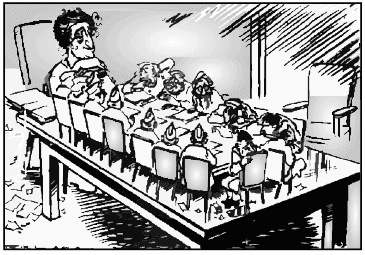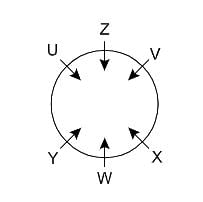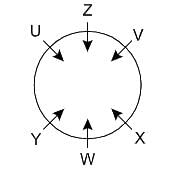Assam Judicial Services Prelims Mock Test - 5 - Judiciary Exams MCQ
30 Questions MCQ Test - Assam Judicial Services Prelims Mock Test - 5
Directions: In the following question, a sentence has been given in Active/Passive voice. Out of four alternatives suggested, select the one which best expresses the same sentence in Passive/Active voice.
Q. Alice posted the letter.
Directions: In the following question, one part of the sentence may have error(s). Find out the part of the sentence having an error and select the appropriate option. If a sentence is free from error, select 'No error' as your answer.
Q. He admitted/(1) that he /(2) had written the letter./(3) No error (4)
Which of the following is a nonpoint source of water pollution?
Study the given Picture carefully and answer the question that follows:
This picture is related to which of the following.

Which one of the following sources informed us about the division of Indian society into seven castes?
The Massacre of Benaras is associated with
Directions: Each of the following consists of a question and two statements numbered I and II given below it. You have to decide whether the data provided in the statements are sufficient to answer the question.
Six persons from U to Z are sitting around a circular table and facing towards the centre such that Y is second to the right of Z, who is third to the left of W. Z is on the immediate right of V. Who sits second to the right of U?
Statement I: X is not adjacent to Z.
Statement II: Y is the second to the left of X.
A" finds a purse with money, not knowing to whom it belongs: he afterwards discovers that it belongs to "B", and appropriates to his own use. "A" is guilty of:
In which one of the following cases did the Supreme Court uphold the Constitutional validity of the 93rd Amendment to the Constitution introducing Article 15(5)?
The contents of documents may be proved either by
A contract made by a trustee in excess of his powers or in breach of trust cannot be specifically enforced as per
'What cannot be done directly, cannot be done indirectly''. This statement relates to the:
On the retirement, removal or death of a next friend, under Order XXXII, Rule 10 of CPC, the suit is liable to be
Section 11 of the Limitation Act deals with suits
Who can make rules or give special orders from time to time, consistent with the CrPC, as to the distribution of business among the Subordinate Judicial Magistrate?
The limitation period for initiating action where no period of limitation is prescribed anywhere is
Under Section 45 of the Indian Evidence Act, the opinion of an expert cannot be on the question of
Section 11 of the Limitation Act, 1908 deals with suits __________________.
Mahatma Gandhiji was jailed and prosecuted by British regime in 1922 at Ahmedabad u/s 124(A) of IPC for
In every complaint under Section 26 of CPC, facts should be proved by
A dumb witness who gives his evidence by writing in open court is
তলৰ কোনটো শব্দ ষত্ববিধি অনুসৰি অশুদ্ধ ?
তলৰ কোনটো শব্দৰ ‘ষ’ স্বাভাবিকতে মূৰ্দ্ধন্য 'য' ?
















